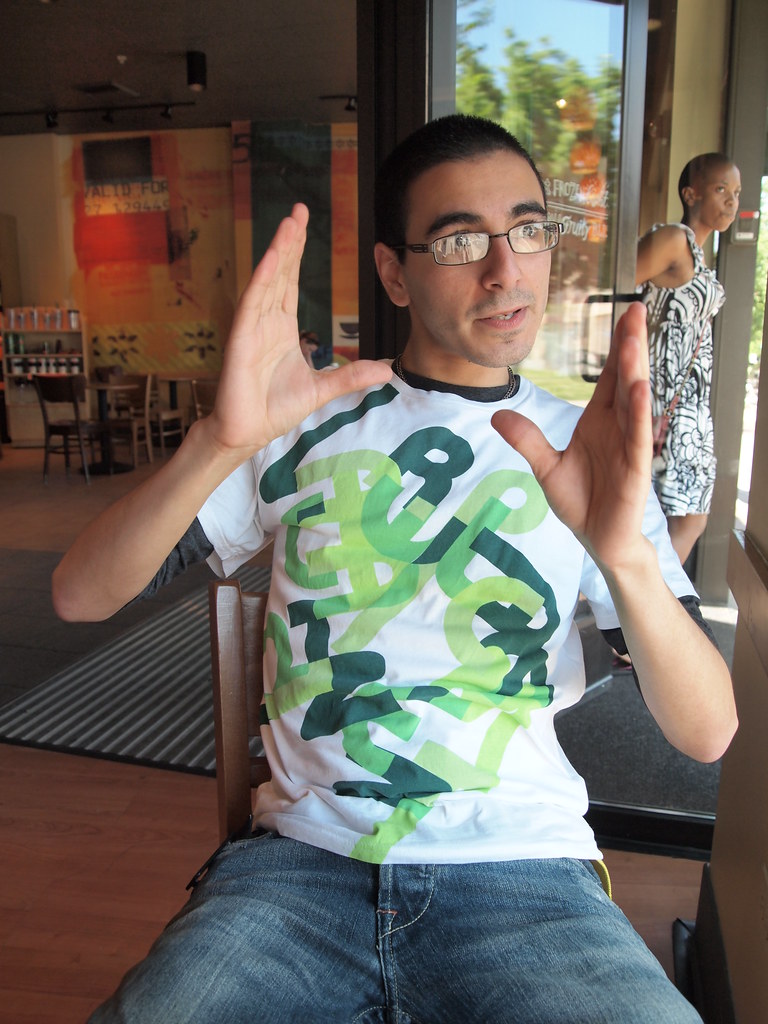As you probably know, I teach and facilitate groups of people in all sorts of learning experiences. Over the years I’ve noticed some repetition in my group dynamics. Here are some secrets about leading a group of people.
It doesn’t matter whether you’re teaching a piece of software or a concept or facilitating a workshop to hack on project or product or even if you’re organizing donors night for your local non-profit – when you are leading a group of people to work together, you will have to deal with difficult personality types.
In large groups, I find all these personalities. In smaller ones, there are varying combinations. I’m including some ways you can deal with these people to keep your class/event/project on track.
The Talker

This is the person that talks all the time, but says little. They use big words they obviously don’t understand. In group discussions, they like the attention and go on and on, paragraph after paragraph, while everyone else is too polite to shut them down. The Talker doesn’t mean to throw everyone off, they just want to prove they’re worthy.
How to deal
Shut them down, nicely. You need to give other participants room to participate. Pull the Talker aside and say something like “Hey [Talker’s Name], Thank you so much for the contributions you’re making to this workshop. You’ve certainly had some good insight. I feel like other people want to discuss your ideas but they haven’t had an opportunity to jump in. Maybe you could try making one point at a time?”
The Mute
This is the person that doesn’t say anything. You never see them interact, they seem like they’re not participating at all. They sit in a corner and passively watch the action happen. They bury themselves in their computers instead of paying attention to what the group is doing.
How to deal
Firstly, back off! We’re not all extroverts, and this person might be engaging much more than you can see. Give the Mute the benefit of the doubt – if they’re sitting in their small group, don’t be so quick to judge that they aren’t contributing. A mute may need gentle guidance. Try an empathetic “Is there anything I can do to help you?” or “How are you feeling about this project?” They may be more comfortable in a one-on-one situation and spill their genius right on your lap.
HEAD’S UP: Are you dealing with a Too Cool for School?
Too Cool for School

This person says nothing and if they do, it’s straight up snark. You don’t see them interact, they seem like they’re not participating at all. They sit in a corner and watch the action happen, every once in a while rolling their eyes. They bury themselves in their devices instead of paying attention to what the group is doing. You ask them how they feel, and they have a snide comment ready for you.
How to deal
Firstly, be sure you don’t have the Mute on your hands. Then, just don’t bother with this person. You aren’t going to change their mind, they are being snarky because you’re the “Man” right now. They perceive you as authority, or they don’t like your style, or they don’t want to be there. Whatever their individual issue is, it’s not on you to fix it, and you’ve got other people who do want to participate. Just ignore the Too Cool for School people. They aren’t worth your time.
HEAD’S UP: Occasionally, one of these people are Beyond Too Cool, they’re actually the Bully.
The Bully
This is the aggressive Too Cool for School person. Not only do they share all the aforementioned attributes, they’re openly aggressive to you or other participants.
How to Deal
Pull the power card, it’s your responsibility to create a safe and inclusive space for people. Ask the Bully to leave. They’ll likely storm off. If they refuse to leave, feel free to pull your power card in front of everyone else. “Thank you [Dickhead’s Name] for your comment, unfortunately, like the vast majority of your comments today, it’s a bit irrelevant. Perhaps if you put your phone away, you’d be able to follow the discussion better.” Say it nicely, with a smile, and watch the Bully get uncomfortable. Hopefully they’ll leave on their own accord, but if the situation escalates, feel free to ask another participant for back up while you pull a public intervention.
The Control Freak
We all know these people. They’re the ones that get into a group and take control, sometimes to the detriment of the rest of the participants. They shut people down, over explain and tell people their ideas don’t matter so that the end result is “perfect”. They know everything, and they let people know. They’re bossy. Spotting these folks can be tricky because you might be seeing an inspired collaborator. They may be interacting with you differently than they are with the participants.
How to deal
You can spot these people if you check on a group and only one person ever talks. Pay attention to the small group dynamics, does it feel a little off? Sometimes other participants will deal with the Control Freak themselves, but I’ve often found that people don’t know how or don’t feel comfortable. Sometimes participants will complain to you, mostly they won’t. If you suspect you have a control freak, consider giving them a singular assignment. The rest of the group will be happy to leave that piece of the project all to the Control Freak.
The Complier

The Complier is the person who avoids any sort of conflict and thus doesn’t share ideas. This person is happy to work on other people’s ideas, but they donate very little of their talents. They allow themselves to be directed, even when they know better. The danger of letting them stay compliant is that they don’t learn to problem solve and over time compliance becomes default.
How to deal
The Complier is afraid of people laughing at them or rejecting them. They allow themselves to be directed because they don’t trust their own opinion. Compliment and question specific contributions a Complier makes, encourage compliers to talk about themselves in some way (e.g. “Wow [Complier Name], it’s a good thing your group has someone with your illustration skills. What was your inspiration for this style?”) It shows them you’re interested in their work, which may give them a little self esteem boost.
The Goofball
Friendly, funny, gifted at taking the tension out of the room, the Goofball can be a facilitators asset or enemy, it all depends on how you interact with them. These folks might make people laugh, but they can also interrupt important work, destroy good ideas and cause other participants to be distracted during your session.
How to deal
The Goofball is hard to deal with because you don’t want to destroy their fun loving nature, but you need to focus them so that they don’t distract people. Encourage the goofball to funnel their energy into the work. Find ways to insert their humor into a project. Help them find their flow by encouraging the group to take a serious theme and make a parody or have the Goofball make “bonus” content for marketing purposes. There are plenty of ways to reign this person in, just make sure you find one before the Goofball ditches his/her group to disturb all the other groups.
The Fully Awesome Participant
There are curious, intelligent, interesting people who understand the value of give and take in a group environment. These people contribute their skillz, ask questions and respect their fellow participants. They collaborate in the true sense of the word and help you by actually caring about their work, your session and the people around them.
How to deal
Thank your lucky stars if you have any awesome participants. Make sure you take the time to encourage them, help them, inspire them. These people share their light. Helping them grow and growing because of them are reasons I do this work.
Who do you know?
Do you have other specific personalities in your groups? What are they? How can people deal with them?